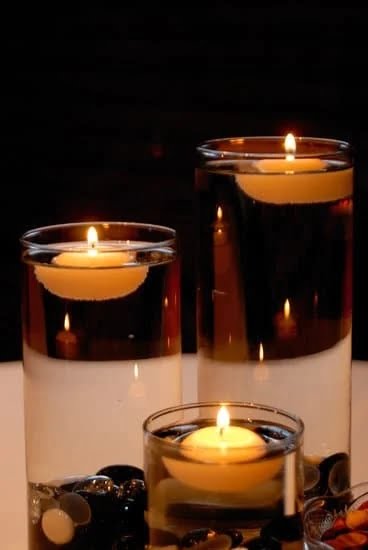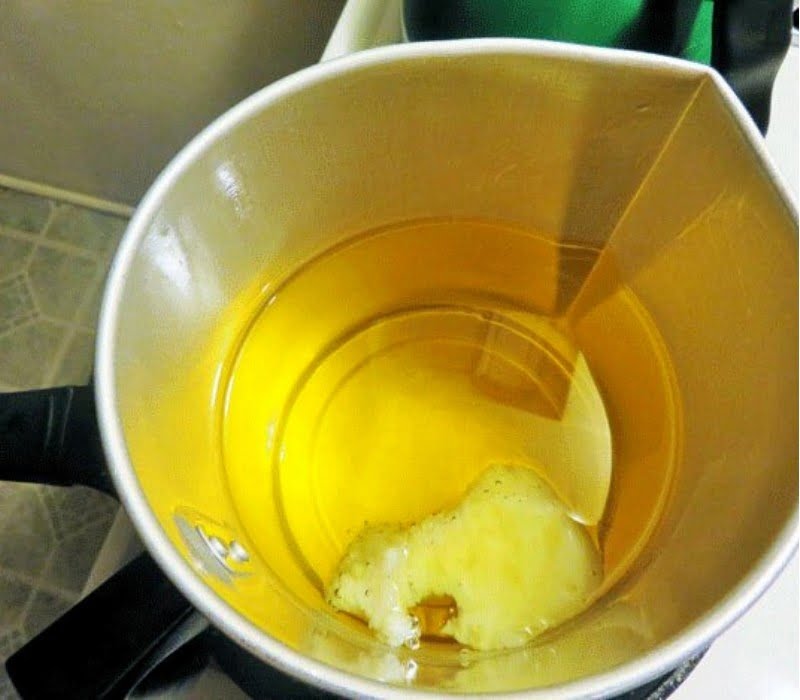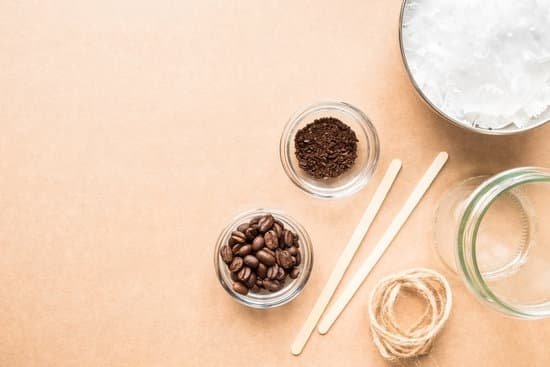Candle making is a cherished craft that has been practiced for centuries, bringing warmth, ambiance, and soothing fragrances to our lives. While there are various factors that contribute to creating high-quality candles, one of the most crucial elements is choosing the right oils.
The selection of oils not only affects the scent but also determines the quality and overall performance of the candle. In this comprehensive guide, we will explore the best oils for candle making and provide you with valuable insights on how to create exceptional aromatic experiences.
When it comes to candle making, understanding the different types of oils used is essential. Each type possesses unique characteristics, benefits, and limitations that can significantly impact your final product. Whether you prefer natural scents or vibrant aromas created by fragrance oils, it is vital to choose those specifically formulated for candle making. By using oils designed for candles, you can ensure optimal burn time, even fragrance distribution, and consistent results that enhance your candle-making experience.
In addition to traditional fragrance oils, essential oils offer a natural approach in creating captivating scents for your candles. Harnessing nature’s aromas, essential oils provide a range of benefits beyond their enchanting fragrances. From relaxation with lavender to invigoration with citrus scents, these pure essences have therapeutic properties that elevate the sensory experience of your candles. We will delve into the world of essential oils and provide recommendations on top-rated options along with their unique scents and benefits.
Join us as we embark on this aromatic journey through the art of candle making and discover how selecting the best oils can unleash your creativity while ensuring superior scent throw and enhanced longevity in your handmade creations.
Understanding the Different Types of Oils Used in Candle Making
In candle making, choosing the right oils is crucial to achieving high-quality and fragrant candles. There are various types of oils commonly used in this craft, each with its own characteristics, benefits, and limitations. Understanding these different types of oils will help candle makers make informed decisions when selecting their ingredients.
One type of oil commonly used in candle making is soybean oil. Made from the oil extracted from soybeans, soybean oil has become a popular choice for several reasons. It burns cleanly, producing very little soot or smoke, which helps to maintain candle quality. Additionally, soybean oil has a slow burn time, resulting in longer-lasting candles.
Another commonly used oil in candle making is coconut oil. Coconut oil has a low melting point and throws fragrance well, making it ideal for scented candles. It also creates a smooth and creamy appearance when solidified, giving candles an attractive aesthetic.
Beeswax is another widely used option for candle making. Beeswax has a natural honey-like scent that adds warmth and character to candles. It provides a slow and clean burn and has excellent heat retention properties.
| Oil Type | Characteristics | Benefits | Limitations |
|---|---|---|---|
| Soybean Oil | Burns cleanly; slow burn time | Long-lasting candles; minimal soot or smoke | – |
| Coconut Oil | Low melting point; good fragrance throw | Aesthetic appeal when solidified; pleasing scent | – |
| Beeswax | Natural honey-like scent; slow and clean burn | Pure and natural aroma; excellent heat retention | – |
It’s important to note that when using oils for candle making, it’s recommended to use fragrance oils specifically formulated for this purpose. These fragrance oils are designed to work well in candles and provide a strong and long-lasting scent. Using other types of oils or essential oils that are not specifically made for candle making may result in poor scent throw or performance.
Essential Oils
Essential oils play a pivotal role in candle making, as they offer natural fragrance properties that can enhance the overall sensory experience. These oils are derived from various plant sources and harness the aromas found in nature. When used in candles, essential oils can create a calming and soothing atmosphere, making them perfect for relaxation purposes or to set a specific mood.
One of the advantages of using essential oils in candle making is their potent and long-lasting scent. Unlike synthetic fragrances, which tend to dissipate more quickly, essential oils retain their aromatic qualities for an extended period. Additionally, essential oils provide a more authentic and pure scent compared to synthetic alternatives.
There is a wide range of essential oils available for candle making, each with its own unique scent and benefits. Some popular choices include lavender oil for its relaxing properties, citrus oils like bergamot or lemon for their uplifting effects, and peppermint oil for its invigorating scent. Rosemary oil can also be used to promote mental clarity and focus while creating candles.
- Lavender Oil: Known for its relaxing properties
- Bergamot or Lemon Oil: Uplifting and refreshing scents
- Peppermint Oil: Invigorating aroma
- Rosemary Oil: Promotes mental clarity
The Versatility of Fragrance Oils in Candle Making
Fragrance oils are a popular choice among candle makers due to their versatility and wide range of options. Unlike essential oils, fragrance oils are synthetic and specifically formulated for candle making, allowing for a stronger and longer-lasting scent. In this section, we will explore the benefits of using fragrance oils in candle making and provide a selection of top-rated fragrance oils suitable for various candle types and personal preferences.
One of the key advantages of fragrance oils is their ability to offer a wide variety of scents that may not be achievable with essential oils alone. Fragrance oils can mimic natural scents such as fruits, flowers, spices, and baked goods, as well as create unique and complex fragrances that cannot be found in nature. This versatility allows candle makers to cater to different preferences and create candles with distinct aromas.
When selecting fragrance oils for candle making, it is important to consider the quality of the oil. Look for reputable suppliers that offer high-quality fragrance oils made specifically for candles. These oils should be designed to withstand the heat generated by burning candles without compromising the performance or emitting any harmful fumes.
| Fragrance Oil | Description |
|---|---|
| Vanilla Bean | A classic scent loved by many, this fragrance oil offers a warm and comforting vanilla aroma. |
| Lavender Fields | This fragrance oil captures the calming essence of lavender fields, perfect for creating relaxing candles. |
| Pumpkin Spice | For those who enjoy the cozy scents associated with fall, this fragrance oil delivers a delightful blend of pumpkin, cinnamon, and spices. |
| Amber Romance | A sensual and captivating fragrance oil that combines exotic florals with warm amber notes for a romantic ambiance. |
These are just a few examples of the many fragrance oils available in the market. Remember to experiment with different scents and combinations to find your signature candle scent. The possibilities are endless when it comes to creating unique and enticing aromas using fragrance oils in candle making.
Blending Essential and Fragrance Oils
In the world of candle making, one of the most exciting aspects is the ability to create unique and personalized scents. By blending essential oils and fragrance oils, candle makers can unleash their creativity and craft signature aromas that captivate the senses.
When it comes to blending oils, it’s important to consider the individual characteristics and strengths of each oil. Essential oils offer a natural and authentic fragrance derived from plants, such as lavender, eucalyptus, or citrus fruits. These oils bring a pure and therapeutic quality to candles, providing a soothing and aromatic atmosphere.
On the other hand, fragrance oils are synthetic blends specifically formulated for their scent strength and longevity. They often emulate popular fragrances found in perfumes, soaps, or flowers. The advantage of using fragrance oils is that they offer a wider range of scents that may not be available through essential oils alone. This allows candle makers to experiment with unique combinations and explore different olfactory experiences.
When blending essential oils with fragrance oils, it’s important to start with small quantities and test the scent as you go along. Remember that some essential oils have stronger scents than others, so adjusting the ratio may be necessary to achieve a well-balanced aroma. Mixing in a separate container before adding it to your melted wax can help you gauge the potency of your blend without wasting precious ingredients.
To get started on creating signature scents, here are some popular combinations:
- Lavender essential oil blended with vanilla fragrance oil for a comforting and relaxing aroma.
- Orange essential oil combined with cinnamon fragrance oil for a warm and inviting ambiance.
- Peppermint essential oil paired with chocolate fragrance oil for a refreshing yet indulgent experience.
Feel free to experiment with different ratios and combinations to find your own unique blend that speaks to your preferences or brand identity.
Safety Considerations
When it comes to choosing oils for candle making, it is important to consider safety precautions to ensure that the oils selected preserve the quality of the candles. Certain oils can compromise the burn, sooting, and longevity of candles if not chosen carefully. Here are some safety considerations to keep in mind when selecting oils for candle making:
- Stability of Burn: It is crucial to choose oils that maintain a stable burn throughout the life of the candle. Some oils, such as highly volatile ones, can cause candles to burn unevenly or produce excessive smoke. To ensure a stable burn, opt for oils with low evaporation rates and high flash points. Examples include soybean oil, coconut oil, and beeswax.
- Reduction of Sooting: Sooting occurs when candles emit dark smoke and leave behind black residue on containers or walls. This not only affects the appearance of the candle but can also pose health hazards if inhaled in excess. To minimize sooting, avoid using oils with high levels of impurities or contaminants. Look for oils labeled as “clean burning” or “low soot” to ensure a cleaner and safer burning experience.
- Longevity of Candles: The longevity of a candle refers to how long it burns before extinguishing itself. Using oils that have low thermal decomposition rates can help extend the life span of candles. These oils will gradually release their fragrance over a longer period instead of burning out quickly. Jojoba oil, palm oil, and apricot kernel oil are examples of oils known for their slow-burning properties.
By considering these safety aspects when choosing oils for candle making projects, you can ensure that your candles not only smell amazing but also provide a safe and enjoyable experience for yourself and anyone who uses them.
Balancing Cost and Quality
Finding Affordable Oils for Candle Making
When it comes to candle making, finding budget-friendly oils without compromising on scent is a common concern for many enthusiasts. Luckily, there are options available that allow you to create beautiful smelling candles without breaking the bank. The key is to carefully choose oils that offer excellent fragrance results at an affordable price point.
One approach to balancing cost and quality is to explore synthetic fragrance oils. These oils are manufactured to mimic natural scents and can be much more cost-effective compared to their natural counterparts. Synthetic fragrance oils often come in a wide variety of scents, offering a vast selection for candle makers to choose from. They also tend to have a strong scent throw, meaning the fragrance will disperse well when the candle burns.
Another option for budget-friendly oils is to consider purchasing larger quantities. Some suppliers offer bulk purchasing options or discounts for buying in larger quantities. This allows you to save money in the long run as you can get more oil for your money.
Striking a Balance: Cost vs. Quality
When trying to balance cost and quality in oil selection, it’s important not to compromise too much on either factor. While it may be tempting to opt for the cheapest available option, keep in mind that lower-quality oils may not give you the same aromatic experience as higher-quality ones.
To strike the right balance between cost and quality, consider experimenting with different brands and suppliers. Read reviews from other candle makers and gather recommendations on affordable options that still offer good scent payoff. It’s also helpful to request samples before committing to larger purchases so you can test out different oils without investing too much upfront.
Remember that even though cost is an important consideration when choosing oils, it’s equally vital that they meet your desired quality standards. Aim for a reasonable price range while ensuring that the chosen oils provide a satisfying scent throw and contribute positively overall to your candle-making process and experience.
By carefully considering your options, exploring alternative sources, and being open to trying different brands, you can find budget-friendly oils that don’t compromise on scent or the final quality of your candles. So don’t let budget constraints dampen your creativity – there are oils out there that will allow you to create beautiful, fragrant candles without breaking the bank.
Expert Tips and Tricks for Working with Oils in Candle Making
Maximizing Scent Throw
One of the key goals in candle making is to achieve a strong and long-lasting scent throw. To maximize the scent throw of your candles, there are several expert tips you can follow:
- Use the correct amount of fragrance oil: It’s important to measure your fragrance oils accurately to ensure optimal scent throw. Follow the recommended usage rate provided by your fragrance oil supplier, typically around 6-10% for most oils. Adding too little or too much fragrance oil can negatively affect the scent throw.
- Consider the type of wax: Different types of wax have different abilities to hold and release fragrance. Soy wax, for example, has excellent scent throw capabilities, while paraffin wax may require a higher percentage of fragrance oil to achieve a strong scent.
- Allow for curing time: After pouring your candles, it’s essential to let them cure for at least 24-48 hours before testing their scent throw. During this time, the fragrance will blend with the wax and develop its full aroma.
- Choose suitable wick sizes: A properly sized wick ensures that your candle burns evenly and helps distribute the fragrance throughout the room more effectively. Consult wick charts or seek guidance from experienced candle makers to select the appropriate wick size for your specific candle diameter and chosen wax.
Improving Scent Retention
Scent retention is another crucial factor in candle making as it determines how well your candles maintain their fragrance over time. Here are some expert tips on improving scent retention:
- Store your oils properly: Fragrance oils can degrade if exposed to high temperatures or direct sunlight for extended periods. It’s best to store them in cool, dark places away from heat sources and sunlight.
- Use quality ingredients: Opting for top-quality oils, waxes, and other candle-making supplies can contribute to better scent retention. Invest in reputable and trusted suppliers that offer high-quality fragrance oils.
- Consider container choice: The type of container you use for your candles can impact scent retention. Non-porous containers, such as glass or metal, tend to retain fragrances better than porous materials like certain types of ceramics.
- Keep candles covered: When not in use, cover your candles with lids or other suitable covers to help preserve their fragrance. This prevents the scent from dissipating into the air or being absorbed by external factors.
- Avoid drafts and moisture: Exposure to drafts or excess moisture can cause your candles to lose their fragrance more quickly. Ensure that you store and burn your candles in a dry, draft-free environment to maintain optimal scent retention.
Enhancing Overall Candle Quality
Aside from maximizing scent throw and improving scent retention, there are additional tips and tricks that can enhance the overall quality of your homemade candles:
- Use a double boiler: When melting wax and adding fragrance oils, using a double boiler method helps prevent overheating or burning the wax and oils. Place the wax in a heatproof container within a larger pot filled with water and melt gently over low heat.
- Stir slowly and thoroughly: Stirring the melted wax and fragrance oils should be done slowly but thoroughly to ensure proper blending of scents. Avoid vigorous stirring, as it can introduce air bubbles into the mixture that may interfere with burning performance.
- Test before mass production: Prior to making large batches of candles, test small samples first to evaluate the scent throw, burn time, and any potential performance issues. This allows you to make adjustments if necessary before investing in larger quantities of supplies.
By following these expert tips and tricks for working with oils in candle making, you can elevate your candle-making skills and create high-quality products with exceptional fragrance experiences for yourself or as thoughtful gifts for others.
Conclusion
In conclusion, choosing the right oils for candle making is essential in creating exceptional aromatic experiences. Throughout this comprehensive guide, we have explored the different types of oils commonly used in candle making, including essential oils and fragrance oils. We have discussed their characteristics, benefits, and limitations, and provided a curated list of the best oils for creating high-quality and fragrant candles.
By harnessing the power of nature’s aromas with essential oils, you can add a natural and unique fragrance to your candles. The advantages of using essential oils lie in their natural properties and diverse scents. From soothing lavender to invigorating citrus, there is an array of essential oils to choose from that can enhance your candle’s fragrance.
On the other hand, fragrance oils offer versatility and a wide range of scents that can cater to various personal preferences. With fragrance oils, you can create candles with stronger and longer-lasting aromas, providing a more potent sensory experience. The possibilities for blending different oils are endless, allowing you to unleash your creativity and craft signature scents that are truly one-of-a-kind.
It is crucial to consider safety when choosing oils for candle making as certain oils may compromise candle quality or pose potential risks. By selecting stable-burning oils that reduce sooting and enhance longevity, you can ensure your candles burn safely while maintaining their desired scent profile.
Frequently Asked Questions
What kind of oil is best for candle making?
When it comes to candle making, the type of oil that is best largely depends on personal preference and the desired outcome. However, many candle makers often opt for specialized candle fragrance oils or essential oils. Fragrance oils are specifically formulated for candles and tend to have a stronger scent throw, allowing for a more potent aroma when the candle is burned.
On the other hand, essential oils are derived from natural plant sources and can provide a more organic scent option. Some popular choices for candle making include lavender essential oil for its soothing properties, vanilla fragrance oil for its warm and sweet aroma, or citrus essential oils like orange or lemon for a refreshing and energizing scent.
What essential oils make candles smell stronger?
Certain essential oils have been found to have strong aromatic qualities that can enhance the scent of candles. Among the essential oils known to make candles smell stronger are lavender, eucalyptus, peppermint, lemongrass, and rosemary. These oils contain potent aromatic compounds that can linger in the air when the candle is burning, filling the space with their delightful scents.
It’s important to note that each person’s olfactory perception differs slightly, so what might be strong-smelling to one person may not be as intense for another. Experimenting with different ratios of these essential oils can help achieve desired results when it comes to enhancing a candle’s scent throw.
Is it better to make candles with essential oils or fragrance oils?
Deciding whether to use essential oils or fragrance oils in candle making really depends on personal preferences and specific circumstances. Both options offer unique benefits. Essential oils are derived directly from plants and are considered natural as they retain therapeutic properties associated with those plants. They can provide a more natural and earthy experience during candle burning while adding potential aromatherapeutic benefits.
On the other hand, fragrance oils are synthetic blends developed specifically for their ability to disperse strong scents in candles consistently. They often offer a wider variety of scents than essential oils alone and can generate stronger and longer-lasting fragrance throws. Ultimately, the choice between essential oils and fragrance oils comes down to personal preference, desired scent, and any potential sensitivities or allergies that need to be considered.

Welcome to my candle making blog! In this blog, I will be sharing my tips and tricks for making candles. I will also be sharing some of my favorite recipes.





